Resorts of Northern Cyprus.
Despite the political division of Cyprus, the tourist infrastructure is developed in both parts of the island, with resorts in Northern Cyprus becoming increasingly popular among European tourists.
Firstly, this is due to the ideal climate and natural conditions. The Kyrenia mountain range protects the coast from cold winds, which allows the air to warm up slightly more than in the rest of the island. The abundance of conifers has a beneficial effect on health, especially in cases of chronic respiratory diseases. The beaches are not crowded, and the sea water is clean and warm almost year-round.
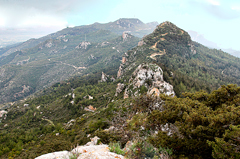
Secondly, there are many cultural landmarks on the territory of Turkish Cyprus: ancient cities, coastal fortresses, medieval monasteries and churches, mosques of the Ottoman Empire era, and unique Turkish villages. The buffer zone, Varosha, and Famagusta are also worth a visit.
Nicosia (Lefkosia) is the capital of Northern Cyprus.
Every tourist's introduction to Northern Cyprus undoubtedly begins with its capital. The division into Greek and Turkish parts alone makes it unique. In addition, there are many sights to see. You should definitely wander through the narrow streets of the Old City, surrounded by a 16th-century wall, and see the Kyrenia Gate, built by the Venetians, towers, and fortresses. Another highlight of the city is Ataturk Square with the Venetian Column. However, traditional eastern architecture prevails.
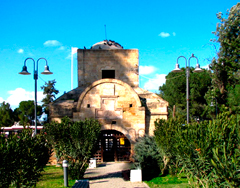
A city tour must include a visit to such places as the Selimiye Mosque, formerly known as the Cathedral of St. Sophia, the Arab Ahmet Mosque, adorned with a magnificent dome, a fountain for ablution, and an adjacent cemetery where great Turkish rulers are buried, as well as the Haidar Pasha Mosque, created on the site of a Gothic church, which is now home to the Art Gallery.
And what is the East without Turkish baths and noisy bazaars where you can indulge yourself with original souvenirs? The Buyuk Han caravanserai with a small mosque in the courtyard is a model of an Eastern hotel. However, today the former guest rooms are occupied by shops and workshops of local craftsmen, and restaurants are located in the courtyard. Museum lovers can visit the Turkish Cypriot Ethnographic Museum, which previously housed the Muslim order of "whirling dervishes." Perhaps the only thing missing in Nicosia is beaches. In search of a secluded corner of nature, we will head to another place.
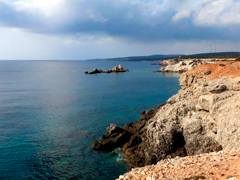
Karpas.
The town of Karpas in the northeast of the island is an ideal place for those who love secluded beaches and wild nature. The coast is so quiet and peaceful that even local turtles fearlessly lay their eggs here. The purest water, soft sand, and serene atmosphere prevail on any beach in Karpas, whether it's wild or on the hotel grounds.
Bafra.
The capital of eco-tourism in Northern Cyprus is Bafra. This resort in Northern Cyprus is for those who want to get to know the daily life of Turkish Cypriots up close. Visitors are offered to live in villages in traditional conditions of the island's indigenous inhabitants. This direction in tourism is strongly supported and developed by the government and adds a certain exclusivity to the vacation. Local residents will be happy to treat you to national dishes, teach you how to make olive oil, and show you picturesque places in the area.
Buyukkonuk.
A trip to the eco-village of Buyukkonuk will open up an amazing world of leisurely life for Turks. The village is located on a sandy beach with crystal-clear water. The surrounding mountains fill the air with a unique aroma of freshness. In addition to getting to know the daily life of local residents, grazing sheep, milking goats, making "hellim" cheese and olive oil, travelers can see architectural attractions such as the Byzantine castle of Kantara in the mountains, as well as numerous churches and monasteries. Souvenirs or products from local artisans can be purchased at the Delkraft store
Nitovikla.
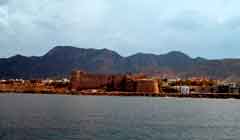
This is another eco-tourism spot that resorts in Northern Cyprus offer. Visitors can stay at an eco-hotel and participate in harvesting crops with local Turkish Cypriots, making homemade pastries and bread, and enjoying authentic Turkish coffee on the sand. A unique place in Nitovikla that is definitely worth visiting is a restaurant located in a cave 10 meters deep. Here, exceptional Cypriot dishes made from organic ingredients are served. The Wine House is also very popular, where you can taste traditional Cypriot wines and appreciate their flavor.
Kyrenia (Girne).

Kyrenia is a gem of the northern coast of Cyprus. Its pure, incredibly beautiful sea, luxurious hotels, and numerous ways to spend your time set it apart from other resorts. Diving enthusiasts can engage in their favorite sport in scuba diving clubs, while hiking enthusiasts will find excursions to St. Hilarion Castle, the Icon Museum, and the Museum of the Sunken Ship fascinating. These landmarks are a must-see for every tourist visiting Northern Cyprus. The museum's main exhibit is a sunken ship that is more than 2,300 years old. Theuniquediscoverywasmadein 1965.
Famagusta.

This is the most popular resort in Northern Cyprus. Here, you can not only relax on local beaches but also visit many historical architectural landmarks. In the Old City of Famagusta, ancient buildings and sculptures are still preserved. Tours of military bastions and structures, among which the Othello Tower stands out, will also be unforgettable.
Kumyalı.
Not far from Famagusta is the beautiful village of Kumyalı. The most interesting sights here are the Church of St. Solomon with 15th century wall frescoes and other religious buildings. Under the church building, there is a tomb with the relics of saints, but it is only open for visitors in the summer. A wild Golden beach is located just ten minutes' drive from the village.
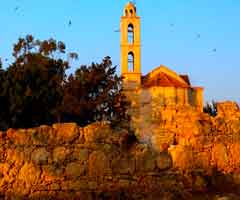
Salamis.
The entrance to Salamis will cost the tourist 6 lira. According to an old legend, it was built by the Greek prince Teucer, who was expelled by his father, so the prince decided to give Salamis the name of his hometown.
Morphou.
The popularity of the town of Morphou among tourists is ensured by regular Orange Festivals and one of Cyprus's most important landmarks - the Monastery of St. Mamas.
Northern Cyprus resorts are becoming increasingly popular in the Mediterranean. The region offers a tranquil atmosphere that allows visitors to relieve stress, unwind, and fully enjoy the Mediterranean nature. The government of TRNC pays great attention to tourism development, ensuring visitors feel safe and carefree.
North Cyprus boasts some of the best beaches in the Mediterranean, with crystal-clear waters and picturesque views. The region is also home to several ancient sites that are well worth a visit. Salamis, one of the most significant ancient cities in Cyprus, is located near Famagusta. Visitors can marvel at the extensive remains of the ancient city, including the impressive amphitheater, gymnasium, and Roman baths.
The village of Kumyalı, also near Famagusta, is a beautiful village with noteworthy landmarks, such as the St. Solomon Church with its 15th-century frescoes and other religious structures. Beneath the church lies a burial chamber with the remains of saints, though it's only open for visitation during the summer. A wild, golden beach is also only ten minutes away from the village.
Morphou, another popular city in the region, is famous for its regular Orange Festivals and the Monastery of St. Mamas, one of Cyprus's most important landmarks. The monastery houses a church that dates back to the 18th century and a museum that exhibits various religious artifacts.
Northern Cyprus is a land of enchantment, with natural beauty and rich history to explore. It's a place that offers a wide range of activities, from sightseeing and sunbathing to exploring ancient sites and indulging in local cuisine. Visitors are sure to find something that will pique their interest and create unforgettable memories.





